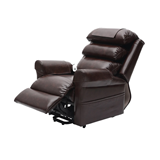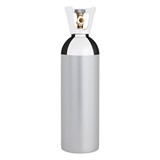Key takeaways
- Financial flexibility: Leasing medical equipment allows healthcare providers to preserve capital, avoid large upfront payments, and manage cash flow more effectively.
- Access to modern technology: Leasing enables clinics and hospitals to stay updated with the latest diagnostic, imaging, and treatment equipment without committing to purchase.
- Maintenance and compliance support: Many leasing agreements include servicing, calibration, and compliance management, reducing operational burden.
- Potential long-term costs: While leasing reduces upfront expenditure, total costs over the lease term can exceed outright purchase if not carefully structured.
- Best equipment to lease: Leasing well-maintained, high-demand medical equipment, like MRI scanners, ultrasound machines, and patient monitors, offers cost-effective access to essential technology while reducing upfront capital expenditure and obsolescence risk
- Regulatory and contractual considerations: Understanding lease terms, residual values, and end-of-term obligations is essential to ensure compliance with Australian healthcare regulations.
Introduction
In Australia’s dynamic healthcare sector, investing in medical equipment represents a significant financial commitment. From MRI scanners to vital signs monitors and dental chairs, the cost of acquiring state-of-the-art machinery can place a substantial strain on cash flow, particularly for private clinics and small-to-medium hospitals. Equipment leasing has emerged as a popular alternative, offering flexibility and access to modern technology without the full upfront cost.
However, while leasing brings benefits, it is not without drawbacks. Understanding the pros and cons, and aligning them with your operational needs, financial strategy, and compliance obligations, is critical for Australian healthcare providers. This article explores the key considerations for leasing medical equipment, illustrated with practical examples and actionable advice for decision-makers.
Understanding equipment leasing in healthcare
Leasing is essentially a contract that allows a healthcare provider to use equipment for a fixed period in exchange for regular payments. There are two main types:
- Operating leases: The provider uses the equipment for a set period without owning it. Maintenance and compliance may be included. At the end of the lease, the equipment is returned.
- Finance leases: The provider has the option to purchase the equipment at the end of the term, often for a predetermined residual value.
In the Australian context, equipment leasing is increasingly common among hospitals, diagnostic centres, and private clinics due to rising capital costs, technological innovation, and regulatory compliance pressures. According to IBISWorld, the medical equipment leasing market in Australia has grown by 5.8% annually over the past five years, reflecting strong demand from both urban and regional healthcare providers.
Benefits of leasing medical equipment
Preserving capital and improving cash flow
Leasing enables clinics and hospitals to avoid the significant upfront capital expenditure required to purchase expensive equipment outright. This is particularly valuable for:
- Small private practices that need MRI or CT scanners but lack the capital to buy.
- Regional hospitals seeking to upgrade critical diagnostic equipment without depleting reserves.
Example: A regional diagnostic clinic in Victoria leased a portable ultrasound machine for $2,500/month instead of purchasing it for $120,000 upfront. The approach allowed the clinic to maintain working capital for staffing and patient services.
Staying current with technology
Medical technology evolves rapidly, with new models offering improved diagnostic accuracy, efficiency, and patient safety. Leasing provides a pathway to:
- Upgrade equipment every 3–5 years without incurring high disposal costs.
- Access advanced features, such as AI-enabled imaging or integrated telemedicine platforms.
Maintenance, calibration, and compliance included
Many leasing agreements include servicing, calibration, and regulatory compliance support, reducing the operational burden for staff:
- Equipment such as MRI machines or X-ray units requires strict calibration for safety and diagnostic accuracy.
- Lease providers often handle servicing schedules and compliance documentation, ensuring adherence to Therapeutic Goods Administration (TGA) standards and Australian radiation safety regulations.
Flexibility for seasonal or fluctuating demand
Leasing allows providers to scale equipment usage according to patient volume:
- Mobile imaging units can be leased temporarily for large-scale health screening programs.
- Clinics can adjust fleet size without incurring long-term asset ownership costs.
Potential drawbacks of leasing
Higher long-term costs
While leasing reduces upfront costs, total expenditure over the lease term can exceed the purchase price:
- Interest and fees are embedded in lease payments.
- Extending leases beyond the initial term can increase costs if residual values are high.
Contractual and compliance complexities
Understanding lease agreements is crucial:
- Residual value obligations and end-of-lease terms may impact financial planning.
- Contracts may have limitations on modifications, relocations, or resale of leased equipment.
Example: A Sydney-based clinic faced unexpected additional fees when relocating a leased CT scanner to a satellite facility due to lease restrictions.
Limited ownership and asset equity
Leased equipment remains the property of the provider, potentially limiting asset depreciation benefits or capital growth:
- Owned equipment can be sold or traded in, providing additional financial flexibility.
- Leased machines cannot typically be used as collateral for financing other projects.
Operational dependency on the provider
Reliance on the leasing company for maintenance or replacement can present risks if service levels drop or if there is delayed support.
Best used equipment to lease in healthcare
Leasing is not equally advantageous for all types of healthcare equipment. Understanding which assets are ideal for leasing can help you manage costs, stay technologically current, and maintain operational flexibility.
Ideal candidates for leasing include:
- Imaging equipment – MRI, CT scanners, and ultrasound machines are high-cost items that depreciate quickly as new technology emerges. Leasing allows you to access advanced models without the full upfront cost and provides options to upgrade as technology evolves.
- Diagnostic and monitoring devices – ECG machines, patient monitors, and vital signs monitors are essential for patient care but may become outdated within a few years. Leasing ensures you can rotate equipment to newer, more efficient models while managing cash flow.
- Surgical and procedural tables – Operating tables, dental chairs, and specialised surgical tables are expensive and heavily used. Leasing spreads the cost and often includes maintenance, reducing downtime and unplanned expenditures.
- Laboratory equipment – Automated analysers, centrifuges, and incubators often require high initial capital and regular servicing. Leasing these items can provide flexibility for smaller labs or clinics to scale operations without heavy upfront investment.
- IT-enabled healthcare devices – Telehealth carts, digital imaging systems, and patient management terminals benefit from leasing as software upgrades or component replacements are frequent.
Why leasing used equipment works in healthcare:
- Reduces large upfront capital expenditure
- Provides access to newer or better-maintained machines
- Simplifies maintenance and service obligations (often included in lease agreements)
- Allows for rapid replacement or upgrades as technology evolves
- Supports budget predictability in fluctuating market
Emerging trends in equipment leasing in Australia
Integration of technology and IoT
Leasing agreements increasingly incorporate smart technology tracking, enabling real-time monitoring of:
- Equipment usage and performance.
- Preventive maintenance scheduling to reduce downtime.
Sustainability and ESG considerations
Hospitals and clinics are under growing pressure to demonstrate environmental responsibility:
- Leasing allows access to more energy-efficient equipment without the sunk cost of owning older, less sustainable machines.
- Providers can replace outdated equipment regularly, reducing e-waste and aligning with ESG initiatives.
Flexible lease structures
Innovative lease models are emerging, including:
- Pay-per-use leases for diagnostic imaging or surgical equipment.
- Short-term project leases for clinical trials, mobile clinics, or regional outreach programs.
Comparative cost analysis
When considering equipment leasing in healthcare, understanding the financial implications is critical. Leasing often provides lower upfront costs compared with purchasing outright, freeing up capital for other operational needs. However, total costs over the term of the lease can vary significantly depending on interest rates, lease structure, and equipment type.
Key considerations for your cost analysis:
- Lease vs purchase: Calculate the total cost of ownership, including interest, maintenance, and disposal costs, and compare it to lease payments.
- Cash flow impact: Leasing spreads payments over time, which can improve short-term cash flow, particularly useful for small clinics or regional hospitals.
- Operational efficiency: Factor in potential productivity gains from access to newer, technology-equipped machinery. Equipment with advanced features often reduces maintenance downtime and operational costs.
- Hidden fees: Be aware of early termination penalties, service charges, and upgrade costs, which can affect the true cost of leasing.
Real-world example: A mid-sized radiology clinic in Sydney opted to lease a CT scanner rather than purchase. By leasing, the clinic avoided a $900,000 capital outlay, keeping cash available for facility upgrades, while maintaining access to the latest imaging technology. Over the five-year lease, the total cost was comparable to buying, but with significantly improved cash flow management.
End-of-lease options
Understanding what happens at the end of a lease is just as important as the lease itself. End-of-lease terms can influence your overall investment, operational continuity, and even regulatory compliance.
Common end-of-lease options in Australian healthcare:
- Return: Equipment is returned to the supplier. This is typical for short-term leases or when technology is rapidly evolving. Ensure the supplier provides clear return conditions to avoid unexpected refurbishment or damage fees.
- Purchase: Many leases offer the option to buy the equipment at a residual value. This can be advantageous for well-maintained assets or when replacement costs are high.
- Renewal: Extending the lease can provide flexibility while retaining equipment for longer periods, especially if your facility cannot immediately justify a new purchase.
- Upgrade or swap: Some suppliers offer lease programs allowing you to swap older equipment for newer models, keeping your technology current without additional capital outlay.
Practical tip: Always review the contract’s residual value and end-of-lease fees upfront. In Australia, high-value imaging and surgical equipment often carry substantial end-of-lease charges if the equipment is returned in poor condition. Planning ahead ensures smooth transitions and prevents budget surprises.
Real-world example: A private hospital in Melbourne leased an MRI scanner with an end-of-lease purchase option. After four years, the facility exercised the purchase option, securing a fully depreciated asset at a lower cost than the market value of a new scanner, while avoiding disruption to patient services.
By considering end-of-lease scenarios early, you can protect your investment, maintain operational efficiency, and align your equipment strategy with both clinical and financial goals.
Practical tips for Australian healthcare decision-makers
- Analyse total cost of ownership versus leasing: Consider upfront costs, lease payments, maintenance, residual value, and upgrade cycles.
- Review regulatory obligations: Ensure the lease covers TGA compliance, radiation safety, and service documentation.
- Evaluate provider reputation: Check reviews, service history, and availability of spare parts.
- Negotiate flexibility: Seek agreements allowing equipment upgrades, relocation, or early termination without prohibitive penalties.
- Plan for technological obsolescence: Align lease terms with expected lifecycle of the equipment to avoid paying for outdated machinery.
- Compare lease versus finance: For high-use, long-term equipment, purchasing may be more cost-effective, while leasing suits short-term or rapidly evolving technology needs.
Case study: Leasing vs buying in a private radiology clinic
Scenario: A private radiology clinic in Brisbane required a new MRI scanner. Options:
- Purchase: $1.2 million upfront, depreciated over 10 years, with additional maintenance costs of ~$50,000 annually.
- Lease: $15,000 per month for 5 years, including servicing and compliance management, with option to upgrade after 3 years.
Outcome: The clinic chose leasing, preserving $1.2 million in working capital, upgrading to a new model after 3 years, and avoiding unexpected servicing costs. The total lease cost was slightly higher than outright purchase but offered operational flexibility and ensured compliance with evolving TGA standards.
Conclusion
Leasing medical equipment in Australia provides healthcare providers with financial flexibility, access to modern technology, and reduced operational burdens. However, it is essential to weigh these benefits against potential long-term costs, contractual complexities, and dependence on the leasing provider.
For decision-makers, the key lies in evaluating the specific needs of your facility, the lifecycle of equipment, and your financial strategy. By carefully comparing leasing versus purchase options, negotiating flexible contracts, and aligning choices with compliance and sustainability goals, Australian healthcare providers can make informed, cost-effective, and future-ready decisions.










